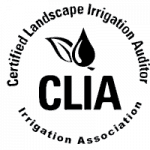Drip irrigation has the ability to be a great irrigation method, but when it is used incorrectly it can actually do more harm than good. If you are interested in drip irrigation, you need to make sure that you purchase a quality system.
Drip irrigation is also a great way to recycle water. You can deliver water at scheduled intervals, exactly where you want it, and you don’t waste any water. The plant’s root zone is directly affected by drip irrigation. This means less water is wasted, and more nutrients are absorbed by plants. Drip irrigation is also a fantastic way to conserve water. It prevents water from evaporating and also significantly reduces the amount of water that is lost through runoff.
When to Install Drip Irrigation
Installing drip irrigation is more complicated than installing overhead sprinklers or furrow irrigation, but not by much. For small gardens, you can easily fit a drip emitter to each plant. For larger gardens, a network of emitters is needed to deliver water evenly to all the plants in the garden. The size of the garden will determine whether a single central point system or multiple point systems are required. In most cases, a single central system will deliver better results and lower costs. Drip irrigation systems are best suited to landscapes where the ground is relatively flat. If the soil is raised above the surrounding area, the water may be wasted.
The Benefits of Drip Irrigation
1. The plants don’t dry out between irrigations.
When it comes to water consumption, the plants are much better off with drip irrigation than they are with overhead sprinkler systems. With an irrigation system, a little rain can wash away the water in the hose. Watering is much easier when drip irrigation is used. If you have a large garden, it may take a few hours to irrigate all of the plants with an overhead sprinkler system. You could easily be watering the same plant over and over, and this can dry out the roots and lead to nutrient loss. When using drip irrigation, you are able to target your watering time and place. For example, you can easily water a tree in the morning, and you will not have to worry about the leaves getting wet or the grass getting watered. The drip emitter will distribute water evenly over a specific area, reducing your chances of water waste. Because of the amount of water that is delivered directly to the roots, nutrient uptake is significantly increased. When drip irrigation is used, the amount of nutrients used by the plant is greater than with overhead sprinkler systems.
2. Drip irrigation is one of the most effective ways to improve the quality of your landscape.
It can deliver water to where you want it when you want it, and it can conserve water. Wasted water is a thing of the past. With drip irrigation, you only water what you need to. It’s 100% efficient.
With a pressurized system, you have more control over the flow of your water and less chance of overwatering. You don’t have to worry about the weather, either. With a pressurized system, you can water your garden in all types of weather. You’ll be able to grow plants that wouldn’t normally survive outside in all kinds of conditions. A drip system can last up to ten years and will not break or leak. Plus, you’ll save on water bills because it will reduce the amount you use. In today’s world, you need to know how much water you’re using, where it’s going, and why it’s important to save water. Water is precious.
3. Drip irrigation is very versatile and can be used on almost any type of garden.
It can be used for trees, shrubs, and perennial flower gardens. It can be used in containers, or you can use it to water your lawn. It’s even good for your vegetable garden. It is especially useful in gardens that use raised beds or containers. The water is delivered to the soil through a network of plastic tubes that are placed between the rows of plants.
4. Drip irrigation is a cost-effective method.
Water savings: 50% – 75% and water conservation: 90%. The water flows through the root zone and is directly absorbed by the plant. The water flow is measured and controlled by an electronic timer. Because the water moves through the soil rather than across it, water and nutrients are not lost through runoff. Drip irrigation has the ability to reduce runoff. It can help prevent soil erosion. It can help control weeds.
What You Need to Know Before Installing Drip Irrigation
It is important to remember that installing a drip irrigation system is not a DIY thing. If it is not done properly, it can do more harm than good. Your best option is to hire landscaping professionals to deliver the job completely, promptly, and accurately for you.
If you are uncertain about what to do, reach out to us at Water Wise Landscape. We are an experienced and skilled team of landscapers that specializes in landscaping design, outdoor lighting, architecture, drip irrigation systems, xeriscaping, pools, and paver installation in Coachella Valley. Call us today and find out how we can help you improve your desert landscape.






